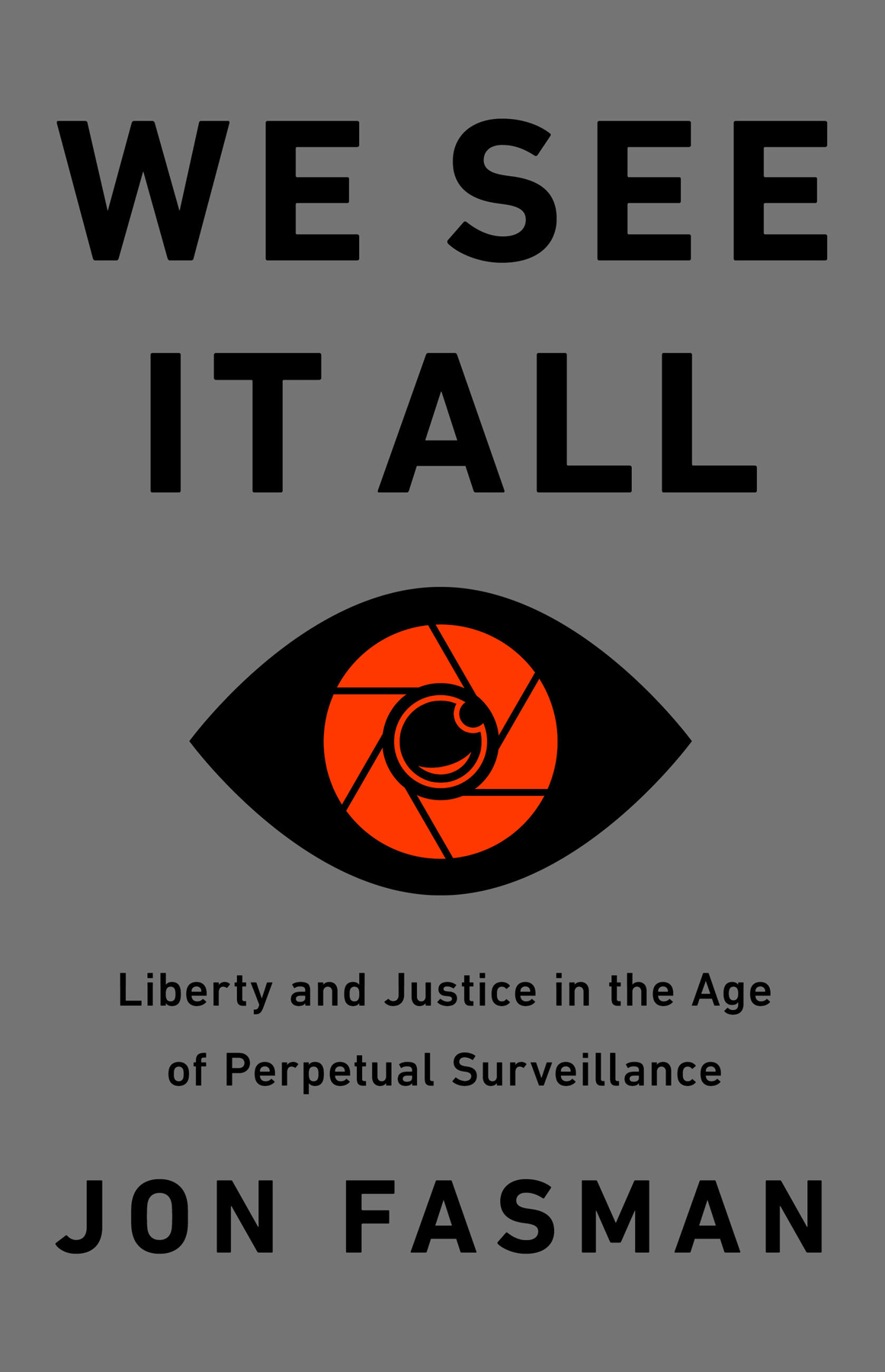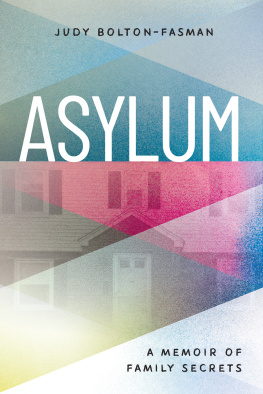Jon Fasman - We See It All
Here you can read online Jon Fasman - We See It All full text of the book (entire story) in english for free. Download pdf and epub, get meaning, cover and reviews about this ebook. year: 2021, publisher: PublicAffairs, genre: Politics. Description of the work, (preface) as well as reviews are available. Best literature library LitArk.com created for fans of good reading and offers a wide selection of genres:
Romance novel
Science fiction
Adventure
Detective
Science
History
Home and family
Prose
Art
Politics
Computer
Non-fiction
Religion
Business
Children
Humor
Choose a favorite category and find really read worthwhile books. Enjoy immersion in the world of imagination, feel the emotions of the characters or learn something new for yourself, make an fascinating discovery.

- Book:We See It All
- Author:
- Publisher:PublicAffairs
- Genre:
- Year:2021
- Rating:5 / 5
- Favourites:Add to favourites
- Your mark:
- 100
- 1
- 2
- 3
- 4
- 5
We See It All: summary, description and annotation
We offer to read an annotation, description, summary or preface (depends on what the author of the book "We See It All" wrote himself). If you haven't found the necessary information about the book — write in the comments, we will try to find it.
We See It All — read online for free the complete book (whole text) full work
Below is the text of the book, divided by pages. System saving the place of the last page read, allows you to conveniently read the book "We See It All" online for free, without having to search again every time where you left off. Put a bookmark, and you can go to the page where you finished reading at any time.
Font size:
Interval:
Bookmark:

Copyright 2021 Jon Fasman
Cover design by Pete Garceau
Cover copyright 2021 Hachette Book Group, Inc.
Hachette Book Group supports the right to free expression and the value of copyright. The purpose of copyright is to encourage writers and artists to produce the creative works that enrich our culture.
The scanning, uploading, and distribution of this book without permission is a theft of the authors intellectual property. If you would like permission to use material from the book (other than for review purposes), please contact permissions@hbgusa.com . Thank you for your support of the authors rights.
PublicAffairs
Hachette Book Group
1290 Avenue of the Americas, New York, NY 10104
www.publicaffairsbooks.com
@Public_Affairs
First Edition: January 2021
Published by PublicAffairs, an imprint of Perseus Books, LLC, a subsidiary of Hachette Book Group, Inc. The PublicAffairs name and logo is a trademark of the Hachette Book Group.
The Hachette Speakers Bureau provides a wide range of authors for speaking events. To find out more, go to www.hachettespeakersbureau.com or call (866) 376-6591.
The publisher is not responsible for websites (or their content) that are not owned by the publisher.
Library of Congress Cataloging-in-Publication Data
Names: Fasman, Jon, author.
Title: We see it all : liberty and justice in an age of perpetual surveillance / Jon Fasman.
Description: First edition. | New York : PublicAffairs, 2021. | Includes bibliographical references and index.
Identifiers: LCCN 2020035296 | ISBN 9781541730670 (hardcover) | ISBN 9781541730687 (epub)
Subjects: LCSH: Electronic surveillanceSocial aspects. | Electronic surveillanceMoral and ethical aspects. | Security systems-Social aspects. | Security systemsMoral and ethical aspects. | Public safety. | Civil rights.
Classification: LCC HM846.F37 2021 | DDC 323.44/82--dc23
LC record available at https://lccn.loc.gov/2020035296
ISBNs: 978-1-5417-3067-0 (hardcover), 978-1-5417-3068-7 (ebook)
E3-20201216-JV-NF-ORI
IN MEMORIAM
GEORGE ATWELL KRIMSKY AND SIDNEY METZGER
What the War on Drugs has done for police militarization, the War on Terror is now doing for police intelligence gathering, and the privacy of millions of Americans is at risk.
Adam Bates, CATO INSTITUTE
O N THE WEST SIDE OF C HICAGO A VENUE BETWEEN T HIRTY -S EVENTH AND Thirty-Eighth Streets in South Minneapolis, there sits a long, low brick building housing a few small businesses. The buildings south side faces a patch of asphalt that in ordinary times could serve as a small parking lot; aside from two rows of glass-block windows near the top, the south side is solid brick. When I saw it, on a balmy July day, the building had been painted purple, with bluish clouds on top and vibrant yellow sunflowers below. Between the flowers and the clouds, in swooping block letters, was painted, You Changed the World, George.
That building sits down the street from the Cup Foods store, where on May 25, 2020, a Minneapolis police officer slowly choked George Floyd to death, in broad daylight and in full view of spectators and their cellphone cameras, as three of his fellow officers looked on. Millions of people saw the horrific video of the incident, which went viral on May 27.
Im writing this sentence on the afternoon of July 12, just a couple of hours after my visit to the intersection now known as George Floyd Square, so I dont know whether or how the weeks of protests that followed Floyds murder affected, or perhaps even determined, the presidential electionstill months ahead as I write, but in the past as you read. Nor do I know what lasting reforms they will have wrought in American policing. But on this warm afternoon, the muralist seems to have gotten it right: George Floyd did change the world.
A couple of doors down from the purple building, I saw a boarded-up shopfront window covered in signs calling to Defund & Dismantle the Police. A row of flowers hanging on a clothesline framed a piece of laminated paper urging people to creatively imagine a world without police. On a bus shelter a few blocks away, a sign showed a balance, with a police car weighing down a school, a hospital, a bus, and houses, and asked, Why are we fighting over crumbs for the things we need? #DefundMPD.
Minneapoliss city council pledged to abolish the citys police department, and while as I write that hasnt happened, that they even passed such a measure at all shows how much the ground has shifted. Politicians, particularly Democrats, used to be terrified of appearing soft on crime. City politicians never wanted to get on the wrong side of the police and their unions. Now many otherwise left-wing, pro-union activists and politicians cast police unions as impediments to reform, and openly discuss curtailing their collective-bargaining power.
Two things link all of these developments. First, they involve a long-overdue rethinking of the rules around American policing. I dont agree with all of them. I would rather see a world with good, well-regulated police than no police, for instance, and in my view, the city council acted precipitously in vowing to abolish the Minneapolis Police Department without a full consideration of what comes next. But as a society, we have asked the police to do too much. To the extent that defund the police means redirect some share of the police budget to social service workers better equipped to handle many of the problems that, by default, police handle today, Im all for it. To the extent that it means wantonly reduce police budgets for political reasons, Im against it. Vindictive, grandstanding policy is almost always bad policy.
Second, the protests escalated and spread across the world only after I submitted the manuscript for this book, on May 30, 2020. Hence this preface.
Its true that the protests did not directly concern surveillance technology, the main subject of my book. But George Floyds apprehension and murder were recorded on security and cellphone camerasboth of which I discuss in these pages. During the protests that followed, cellphone cameras captured police officers assaulting unarmed, peaceful protesters and driving SUVs through crowds. In many instances, they shot rounds of nonlethal rubber bullets at journalists (nonlethal just means they dont kill you; they still injured numerous people, some permanently, simply for engaging in First Amendmentprotected activity). Thomas Lane, one of the four officers present at Floyds death, bolstered his motion to have his aiding and abetting charges tossed with transcripts from officers body-worn camera (bodycam) footage.
The eighty-two pages of the transcript make for horrific reading. Those transcripts showed that Floyd was, as he said, scared as fuck, pleading with officers, Please, dont shoot me. He told officers that he couldnt breathe fifty-one times, at one point saying, Ill probably just die this way. Without bodycams and cellphone cameras, Floyds death may have gone unnoticed by the wider world.
That points to an important benefit to camera footage that I perhaps paid too little attention to in my chapter on the topic. I was mainly concerned with the question of whether being filmedby bodycams or cellphonesimproves officer behavior, principally as measured by use-of-force and other civilian complaints. On that question, the social science is ambiguous: some studies have found that outfitting officers with bodycams results in fewer use-of-force complaints; others have found that doing so produces no noticeable changes.
Font size:
Interval:
Bookmark:
Similar books «We See It All»
Look at similar books to We See It All. We have selected literature similar in name and meaning in the hope of providing readers with more options to find new, interesting, not yet read works.
Discussion, reviews of the book We See It All and just readers' own opinions. Leave your comments, write what you think about the work, its meaning or the main characters. Specify what exactly you liked and what you didn't like, and why you think so.

